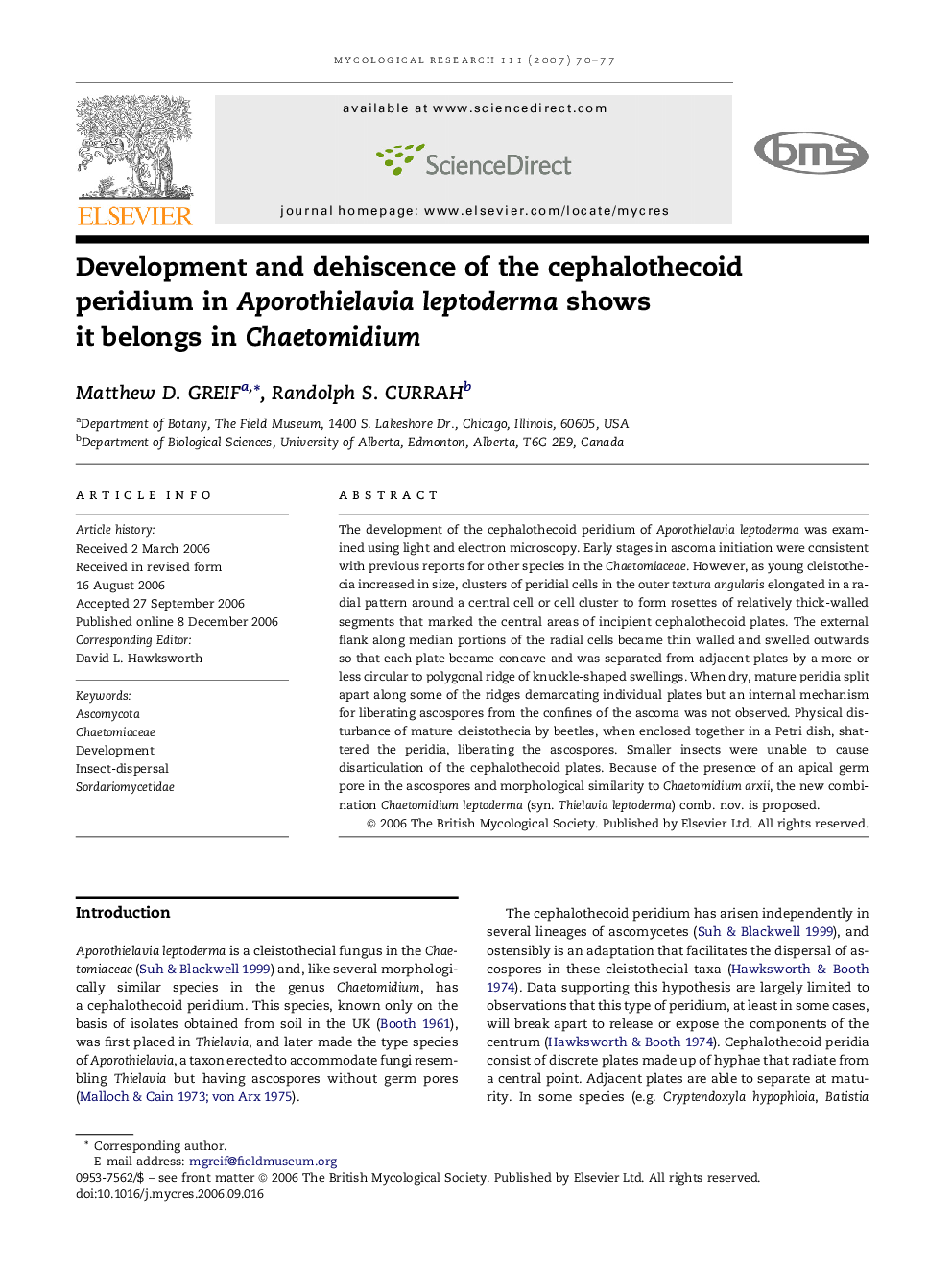| Article ID | Journal | Published Year | Pages | File Type |
|---|---|---|---|---|
| 4358044 | Mycological Research | 2007 | 8 Pages |
The development of the cephalothecoid peridium of Aporothielavia leptoderma was examined using light and electron microscopy. Early stages in ascoma initiation were consistent with previous reports for other species in the Chaetomiaceae. However, as young cleistothecia increased in size, clusters of peridial cells in the outer textura angularis elongated in a radial pattern around a central cell or cell cluster to form rosettes of relatively thick-walled segments that marked the central areas of incipient cephalothecoid plates. The external flank along median portions of the radial cells became thin walled and swelled outwards so that each plate became concave and was separated from adjacent plates by a more or less circular to polygonal ridge of knuckle-shaped swellings. When dry, mature peridia split apart along some of the ridges demarcating individual plates but an internal mechanism for liberating ascospores from the confines of the ascoma was not observed. Physical disturbance of mature cleistothecia by beetles, when enclosed together in a Petri dish, shattered the peridia, liberating the ascospores. Smaller insects were unable to cause disarticulation of the cephalothecoid plates. Because of the presence of an apical germ pore in the ascospores and morphological similarity to Chaetomidium arxii, the new combination Chaetomidium leptoderma (syn. Thielavia leptoderma) comb. nov. is proposed.
